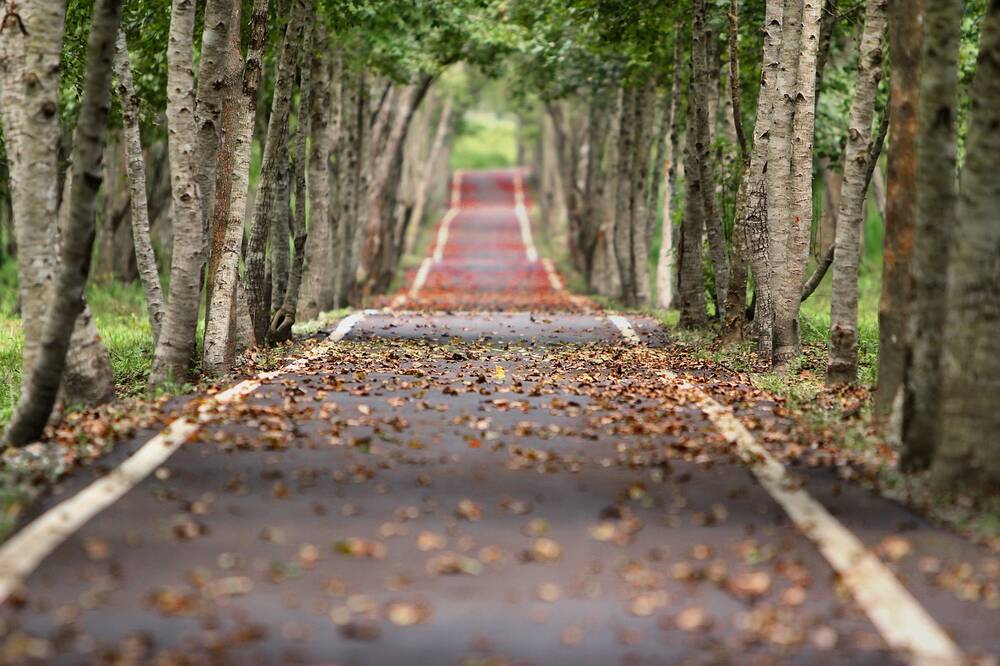Urbanisation has led to biodiversity loss through habitat destruction and fragmentation, with invasive species, urban heat and pollution exacerbating challenges for wildlife.
Though species can be stuck in fragmented habitats and have to deal with external stressors, many have adapted to this environment, and contribute essentially towards urban biodiversity.
This article delves into the various different places where urban biodiversity thrives, from street-lining trees to vertical gardens. It covers plants and animals that live in urban areas, such as feral cats, pigeons, bees, and foxes, all of which contribute to enhancing urban ecosystem resilience while providing key services like air purification and climate change regulation.
What is Urban Biodiversity
Urbanisation has led to habitat loss and fragmentation, polluted nature, non-native species introduction, heat island effect and losses of genetic diversity, however, many plants and animals have adapted to urban environments over time.
Despite posing significant challenges for nature, such as busy roads, human disturbance, and various types of pollution, urban biodiversity crucially upholds ecological balances within cities. It fosters essential ecosystem services that humans rely on for well-being and health.
Areas with high concentrations of development like the South East and London should be seeing more and more green spaces as time goes on under England’s recent Biodiversity Net Gain legislation, which requires developers to ensure that their projects leave the natural environment in a better state than before.
Increasing green spaces like parks, green roofs, and community gardens, can serve as vital refuges for wildlife while also improving the quality of life for urban residents, encouraging a synergistic coexistence between people and urban wildlife.
Places Where Urban Biodiversity Can Be Found
Street Trees

A key example of urban biodiversity is street trees. Across the UK, they offer sites for nesting and shelter for insects, pollinators, birds and other native species.
Street trees also provide links between habitats fragmented by roads, train lines, development and other causes of habitat loss from urbanisation. They connect parks, gardens and habitats, offering safe passages of travel between habitats.
Trees also function as microhabitats, with their roots, leaves and bark all home for fungi, invertebrates and various mosses.
Urban Parks

Urban parks vary, sometimes offering sparse habitats, while at other times providing lush, rich areas that support abundant wildlife. London’s Hyde Park is a notable example, featuring woodlands, ponds, and grasslands, each of which supports a diverse range of flora and fauna. Together, they form a vast refuge for nature amidst swathes of hectic urban landscapes.
Many parks plant native wildflowers, crucially attracting pollinators to strengthen ecosystems, and lakes and ponds provide essential habitats for ducks, swans, amphibians and fish.
Community Gardens
Community gardens operate across the UK as ways for collaborative, nature-first gardening, in a multitude of ways.
Allotments, for instance, are where people rent smaller plots of land to garden to their liking. Community orchards can be managed by local communities or educational gardens teach gardening skills in schools.
Alternatively, guerrilla gardening is less formal with more risk. It involves planting on the land without legal access to do so, such as in neglected urban environments or alongside roads.
Green Roofs
Green roofs are less common in the UK, however, development in England under the new Biodiversity Net Gain law calls for on-site habitat recreation where possible, which means that creative environmental considerations such as green roofs will be integrated into architectural planning.
They can offer rare refuge for nature in cities, with native plant species supporting pollinators and local wildlife such as birds. They mitigate rainwater runoff, with the roofs instead absorbing and retaining the rain, reducing risks of stormwater erosion and flooding.
Vertical Gardens
Vertical gardens can range all the way from Stefano Boeri’s Bosco Verticale (Vertical Forest) in Milan, home to nearly 17,000 shrubs, plants, and trees at over 110 metres tall, to the smaller-scale living walls dotted across London, i.e. The Athenaeum Hotel.
These purify air, provide microhabitats for insects, fungi, and mosses, attract pollinators, and create rare spaces for carbon sequestration within packed urban heat islands.
Urban Wetlands

Urban wetlands offer vital habitats for kingfishers, ducks, herons and other wetland birds, alongside frogs, newts and amphibians, largely supporting local biodiversity.
These ecosystems are often rich in aquatic plant life, which not only offers shelter but also serves as food sources for insects and fish. In addition to promoting wildlife, urban wetlands such as the Walthamstow Wetlands in London help mitigate flood risks, filter pollutants from urban runoff, and contribute to the overall health of the urban environment.
Urban Forests
Urban forests are fantastic areas for wildlife to coexist alongside dense urban cities. Sheffield is a hallmark for this, with one of the highest green space ratios per person, and masses of parks, forests and spaces for nature interweaved seamlessly within the bustling, lively student city.
Forests contribute vastly to biodiversity, absorbing masses of CO2 and improving air quality. They provide healthy, biodiverse environments that offer ranges of habitats from nutrient-rich forest floors to towering layers of the canopy.
Plants & Animals in Urban Areas
Native Flowering Plants
Many types of native flowers in the UK adapt to local climates with adjusted seasonal timing, pollinator relationships and light and soil changes, which allows them to thrive in urban gardens and parks.
Through adaptation, they develop resilience to minimal watering, compact soil plus harms from urban pollution, and strengthen local ecosystems by fostering pollination while offering food and shelter to local wildlife.
Wildflower meadows in many parks of London encourage native species reintroduction, beautifying urban landscapes and bolstering biodiversity.
Pollinators

While bees themselves have adapted to urban environments, nestling in rooftops, walls and urban cracks, the UK’s catastrophic biodiversity crisis prevails.
As a result, many initiatives aim to enhance our pollinator populations, such as Manchester’s “B-Lines”—insect pathways made from networks of wildflower corridors through cities and towns, or Defra’s annual Bees’ Needs week which encourages widespread bee and pollinator awareness through community engagement.
Birds

Pigeons and sparrows adapt to urban environments by nesting in manmade structures or buildings and living off human waste, such as bread crumbs and food particles.
Urban parks and gardens provide shelter and food sources to blackbirds, robins, and other bird species less adapted to urban spaces.
Bird feeders are growing in popularity in UK gardens, strengthening local ecosystems by sustaining essential bird populations, especially in the colder months where food sources can be scarce.
Urban Mammals

Mammal populations have adapted to urban environments in various ways. Badgers and foxes, for instance, utilise the abundance of human waste in cities and towns, allowing them to thrive.
Grey squirrels and hedgehogs, on the other hand, seek refuge in urban parks and gardens, able to forage with less risk. Rats and mice are well-suited to living in close proximity to humans, benefiting from the plentiful shelter and food waste found in densely developed areas.
Reptiles
Reptiles require sun exposure, cover and shelter, water, food and breeding areas with minimal disturbance from humans. Though cities are packed with people, there can be more options for shelter to quiet away from humans, however, this also comes with noise and light pollution.
Being cold-blooded, they benefit from the urban heat island effect prevalent in cities, but overheating in the summer does pose a significant risk.
Slow worms, grass snakes, and common lizards may thrive in gardens, parks, and brownfield sites, preying on some invertebrates and insects.
They bask in the sun when they can, and then hibernate in log piles, under stones, or in compost heaps in winter.
Amphibians

Amphibians must find urban watercourses, which can appear in public parks, botanical gardens, allotments, wildlife reserves or on school grounds.
Urban ponds, for instance, provide essential breeding grounds for species like frogs and newts, while wetland parks and shaded gardens create damp microclimates that support their life cycles. However, these habitats are often fragmented, which can disrupt breeding and foraging. Additionally, amphibians face threats from traffic, noise, light pollution, and urban runoff, which can negatively impact their health and survival.
Fish in Urban Water Bodies

Lakes, rivers, canals, fountains and constructed wetlands are examples of urban water bodies that can host fish that have adapted to urban environments. These fish populations tend to be less healthy than non-urban, having to coexist with urban runoff, light, noise, and water pollution, pesticides, physical disruptions and other environmental stresses.
While food sources in urban waters can vary, they tend to be of lower quality and less diverse, often relying on human-discarded items like bread, rather than nutrient-rich natural foods such as reedbeds and algae typically found in less disturbed environments.
Fungi
Fungi thrive in diverse, natural, undisturbed habitats such as fields and woodlands, however still play a key role in urban ecosystems by nutrient recycling urban soil.
They support urban biodiversity by maintaining mycorrhizal bonds with trees and plants, connecting with their roots and extending deep into the soil, allowing them to absorb more water and nutrients. The fungi get sucrose and glucose in return which are essential energy sources.
Mosses
Moss can survive low light, poor soil and extreme moisture, making it highly adaptable and common in urban environments. It grows on roofs, in shaded walls and along pavements, retaining moisture which creates key microhabitats for invertebrates, microorganisms and smaller insects.
Insects
Bees, butterflies, ants and cockroaches utilise gardens and green spaces to adapt to urban environments, with the latter benefiting from urban heat island effects.
Without the diverse natural habitats granted by rural areas, insects must search harder for shelter and food—especially for those without pesticides poisoning it. They must navigate intensified human disturbances and varieties of pollutants.
Earthworms

Earthworms primarily live in soil, feeding on its organic matter and depending on its moisture for survival. Urban environments provide fallen leaves, garden clippings and other organic waste valuable for the life cycle of earthworms.
Urban soils tend to be more compacted due to heightened construction and foot traffic, so some types of earthworms have adapted to breed deeper into the soil to minimise risk.
Soils can also be polluted from various runoff sources, with earthworms like the red wiggler able to withstand the higher pollution levels. Because of this, they can source food from areas packed with microplastics, pesticides or volatile organic compounds, such as compost bins.
Feral Animals
In the wild, feral cats and foxes tend to hunt birds and small mammals, whereas in urban areas they eat discarded human food, including leftovers, pet food and food scraps. Feral pigeons and rats similarly scavenge from bins and utilise waste-rich urban environments.
Intensified development can mean there are more opportunities for shelter, nesting, and hiding from human activity.
Microbial Communities
A range of microbial communities thrive in urban environments, such as soil bacteria, sewage microbes, biofilms or airborne microbes. They break down organic matter and release plant-supporting nutrients, strengthening local urban ecosystems by fostering fertile soils in degraded areas.
More Information
https://www.nhm.ac.uk/discover/urban-wildlife.html
https://www.wildlifetrusts.org/where_to_see_urban_wildlife

